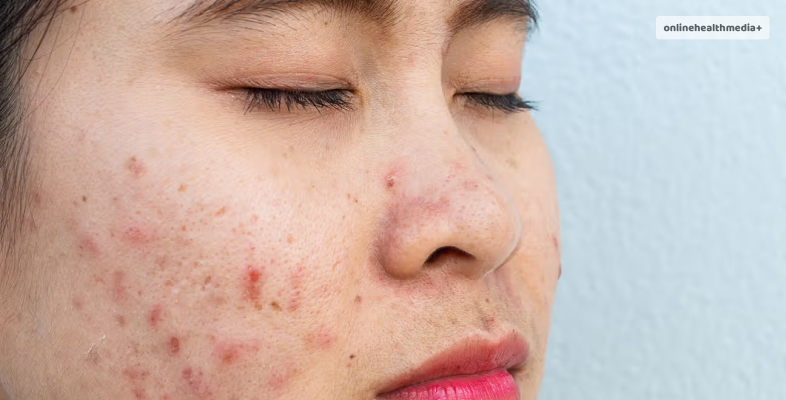Elimination Diet: Here’s How Removal Leads To Healthification
An elimination diet is a structured eating plan that involves removing specific foods or food groups from your diet for a certain period of time.
The goal of an elimination diet is to identify and eliminate foods that might be causing adverse reactions or symptoms, such as allergies, intolerances, sensitivities, or other health issues. Once the problematic foods are identified and removed, the diet is gradually reintroduced to observe any reactions, helping individuals pinpoint which foods trigger their symptoms.
To learn more about this type of diet, read this post till the end. You will get to learn why you should follow this diet, the foods to include, and the ones to avoid as well.
Contents
Why Follow An Elimination Diet?

There are several compelling reasons why someone might choose to follow an elimination diet meal plan. Here are some of the primary motivations for undertaking this structured dietary approach:
1. Identification Of Food Allergies

Allergies can cause severe and potentially life-threatening reactions. An elimination diet, conducted under the guidance of a healthcare professional, can help pinpoint specific foods that trigger allergic responses. Identifying and avoiding these allergens is crucial to prevent anaphylaxis, a severe allergic reaction that can be fatal.
2. Uncovering Food Intolerances
Food intolerances, like lactose intolerance or gluten intolerance, can cause discomfort and digestive issues. An elimination diet helps identify the specific foods causing these intolerances. By eliminating these triggers, individuals can experience relief from symptoms such as bloating, gas, diarrhea, and stomach cramps.
3. Managing Chronic Health Conditions

Certain chronic conditions, such as autoimmune diseases (like celiac disease or rheumatoid arthritis) and inflammatory conditions (like Crohn’s disease), have specific dietary triggers. An elimination diet helps identify foods that worsen inflammation and symptoms. Managing these triggers can significantly improve the quality of life for individuals with chronic conditions.
4. Addressing Gastrointestinal Disorders
Gastrointestinal disorders like irritable bowel syndrome (IBS) often have trigger foods that exacerbate symptoms such as abdominal pain, diarrhea, or constipation. By eliminating these triggers, individuals can achieve better gastrointestinal health, reduced discomfort, and improved bowel regularity.
5. Managing Skin Conditions

Certain skin conditions like eczema, psoriasis, or acne can be influenced by diet. An elimination diet helps identify foods that worsen these conditions. By eliminating these triggers, individuals can experience clearer skin and reduced inflammation.
6. Addressing Migraines and Headaches
For some individuals, specific foods or additives can trigger migraines or headaches. An elimination diet, particularly one that excludes common triggers like caffeine, chocolate, cheese, or artificial sweeteners, can help identify and avoid these headache-inducing foods.
7. Improving Mental Health

Emerging research suggests a potential connection between diet and mental health. Some individuals may find that certain foods exacerbate symptoms of anxiety or depression. By eliminating these triggers, they might experience improved mental well-being and mood stability.
8. Enhancing Athletic Performance
Athletes often use elimination diets to identify foods that enhance or impair their physical performance. By eliminating potential triggers, athletes can optimize their diet for improved endurance, energy levels, and recovery.
9. Understanding General Health and Well-being

Some people pursue elimination diets to understand their bodies better. By eliminating processed foods, additives, or potential allergens, individuals can adopt a simpler, whole-food-based diet. This process can lead to better energy levels, improved digestion, and an overall sense of well-being.
How Does The Elimination Diet Work?

An elimination diet is a systematic approach to identifying and removing specific foods or food groups from one’s diet to pinpoint which ones might be causing adverse reactions or symptoms. Here’s a detailed explanation of how the elimination diet works:
1. Preparation And Planning
The first step involves preparation. It’s crucial to consult a healthcare provider or a registered dietitian before starting an elimination diet. They can help tailor the plan to individual needs and ensure essential nutrients are not compromised during the process. Together, you’ll decide which foods to eliminate based on symptoms and potential triggers.
2. Elimination Phase
During this phase, specific foods or food groups suspected of causing issues are entirely removed from the diet. Common triggers include dairy, gluten, soy, nuts, shellfish, and certain artificial additives.
Individuals adhere to this restricted diet for a period, usually ranging from 2 to 6 weeks, or as advised by the healthcare provider or dietitian. It’s important to read food labels carefully and avoid all forms of the eliminated foods.
3. Reintroduction Phase
After the elimination phase, foods are systematically reintroduced, one at a time, back into the diet. Each reintroduction period typically lasts 3 to 7 days.
During this phase, individuals observe and record any physical or emotional changes, focusing on symptoms such as digestive issues, skin problems, headaches, fatigue, or changes in mood. Reintroduction starts with foods least likely to cause problems.
4. Observation And Documentation
Throughout the reintroduction phase, individuals carefully observe their physical and emotional responses to the reintroduced foods. Symptoms such as bloating, stomach cramps, headaches, skin rashes, or changes in mood are documented meticulously. A food journal is often maintained to track the reintroduced foods and their corresponding symptoms.
5. Analysis And Interpretation
After the reintroduction phase, the individual, along with their healthcare provider or dietitian, analyzes the results. Foods that cause adverse reactions are identified as triggers. The severity and nature of the reactions help classify these triggers, providing valuable information about the body’s response to different foods.
6. Long-Term Dietary Planning
Based on the observed reactions, a long-term eating plan is developed. Foods identified as triggers are permanently removed from the diet. A balanced and nutritionally adequate diet is planned, ensuring that the eliminated foods are substituted with suitable alternatives.
The healthcare provider or dietitian helps create a well-rounded diet that meets nutritional needs while avoiding trigger foods.
7. Follow-Up And Monitoring
Periodic follow-ups with the healthcare provider or dietitian are crucial to monitor progress and ensure nutritional adequacy. Adjustments to the diet plan might be made based on ongoing observations and health improvements.
What Can You Eat On An Elimination Diet?

If you follow an elimination diet meal planner, the goal is to remove specific foods or food groups that could be causing adverse reactions or symptoms.
While the exact foods to eliminate depend on individual circumstances and symptoms, common triggers often include dairy, gluten, soy, nuts, shellfish, and certain additives. During the elimination phase, these foods are strictly avoided.
Here’s a detailed explanation of what you can eat on elimination diet recipes:
1. Whole Foods
Focus on whole, minimally processed foods. This includes fresh fruits and vegetables, which are naturally low in allergens and additives. These provide essential vitamins, minerals, and fiber. Opt for a variety of colors to ensure a diverse nutrient intake.
2. Lean Proteins
Unprocessed protein sources such as poultry, fish, tofu, and legumes are typically allowed. These are rich in essential amino acids and provide necessary protein without significantly impacting allergen levels. Processed meats, however, should be avoided due to potential additives and high sodium content.
3. Whole Grains (If Not Eliminated)
Whole grains like brown rice, quinoa, oats, and gluten-free grains such as millet and buckwheat can be included if gluten is not an eliminated item. Whole grains provide essential carbohydrates and fiber. Gluten-containing grains like wheat, barley, and rye are avoided if gluten sensitivity is suspected.
4. Nuts and Seeds (If Not Eliminated)
Nuts (such as almonds and walnuts) and seeds (like chia seeds and flaxseeds) can be included if not eliminated. They are a good source of healthy fats, protein, and fiber. However, if nuts are a suspected trigger, they should be avoided.
5. Non-Dairy Milks (If Dairy is Eliminated)
Plant-based milk such as almond milk, soy milk, or coconut milk can be used as alternatives if dairy is eliminated. Ensure these options are unsweetened and free from additives.
6. Specific Low-Allergen Vegetables
Most vegetables are well-tolerated. However, individuals with specific allergies might need to avoid certain vegetables. Common low-allergen options include carrots, sweet potatoes, zucchini, and leafy greens.
7. Specific Low-Allergen Fruits
Most fruits are permissible, but individuals with allergies might need to avoid certain fruits. Common low-allergen fruits include apples, pears, bananas, and berries. Avoid fruit juices due to potential additives and high sugar content.
8. Cooking Oils
Cooking oils such as olive oil, coconut oil, or avocado oil are typically allowed. However, flavored oils might contain additives, so it’s essential to use plain, unprocessed oils.
9. Herbs And Spices
Herbs and spices are excellent for adding flavor without adding allergens. Use fresh or dried herbs like basil, cilantro, parsley, and spices such as turmeric, cumin, and ginger to enhance the taste of your meals.
10. Specific Condiments (Read Labels)
Some condiments like mustard and certain types of vinegar can be allowed, but it’s crucial to read labels. Many commercial condiments contain allergens and additives, so it’s best to make your own or choose carefully.
What Can’t You Eat On An Elimination Diet?

In an elimination diet, the primary goal is to identify and eliminate specific foods or food groups that might be causing adverse reactions or symptoms. The foods to avoid are determined based on individual circumstances, symptoms, and suspected triggers.
Here’s a detailed explanation of what you typically can’t eat on an elimination diet food list:
1. Common Allergens
Foods known to cause allergies are often eliminated. These include:
- Dairy: Milk, cheese, yogurt, and other dairy products. Lactose-free alternatives might be allowed.
- Gluten: Found in wheat, barley, rye, and their derivatives. Gluten-free grains like rice, quinoa, and corn are usually allowed.
- Soy: Soy-based products and derivatives like soy sauce and tofu.
- Nuts and Seeds: Certain nuts (like peanuts) and seeds (like sesame seeds) are common allergens.
- Shellfish: Includes various shellfish like shrimp, crab, lobster, and mollusks.
2. Additives And Preservatives
Many artificial additives and preservatives can trigger adverse reactions. These include artificial colors, flavors, sweeteners (like aspartame), and preservatives (like sulfites). Packaged and processed foods often contain these additives, making them off-limits.
3. Highly Processed Foods
Foods high in refined sugars, unhealthy fats, and processed carbohydrates are typically eliminated. This includes sugary snacks, candies, pastries, fast food, and other processed foods. These often contain additives and are low in nutritional value.
4. Processed Meats
Processed meats like sausages, bacon, deli meats, and canned meats often contain added preservatives, sodium, and unhealthy fats. These are eliminated due to both their processing and potential allergen content. Therefore, if you love the cyclical ketogenic diet and the Dukan diet, stay away from this diet plan!
5. Specific Vegetables And Fruits (If Allergies Exist)
While most fruits and vegetables are allowed, individuals with specific allergies might need to avoid certain ones. For instance, individuals allergic to latex might need to avoid foods like bananas, avocados, and kiwis, which can trigger cross-reactions. People allergic to Lipedema diet and the Hashimoto diet should avoid fruits.
6. Specific Grains And Legumes (If Allergies Exist)
Individuals with allergies or sensitivities might need to avoid certain grains (like corn) or legumes (like lentils). These can be common allergens and might cause adverse reactions.
7. Spices and Herbs (If Allergies Exist)
While most herbs and spices are allowed, some individuals might have allergies to specific ones. For example, individuals allergic to celery might need to avoid celery seeds or celery salt often found in spice blends.
8. Alcohol And Caffeine:
Alcohol and caffeinated beverages can be irritating to some individuals. These are often eliminated during the elimination phase. Alcohol, in particular, can contain additives and might trigger adverse reactions.
Conclusion
It’s essential to note that an elimination diet should be undertaken with caution and under the supervision of a healthcare provider or a registered dietitian. These professionals can guide the process, ensure that nutritional needs are met, and help interpret the results accurately.
Elimination diets are often not meant to be long-term but rather a tool for identifying specific triggers, after which a balanced and varied diet should be reintroduced.
Also Read
- Fund Your Business With A Medical Business Loan.
- The Benefits Of Physiotherapy For Chronic Pain Management.
- Healing From Within: Harnessing The Body’s Energy In Recovery.



